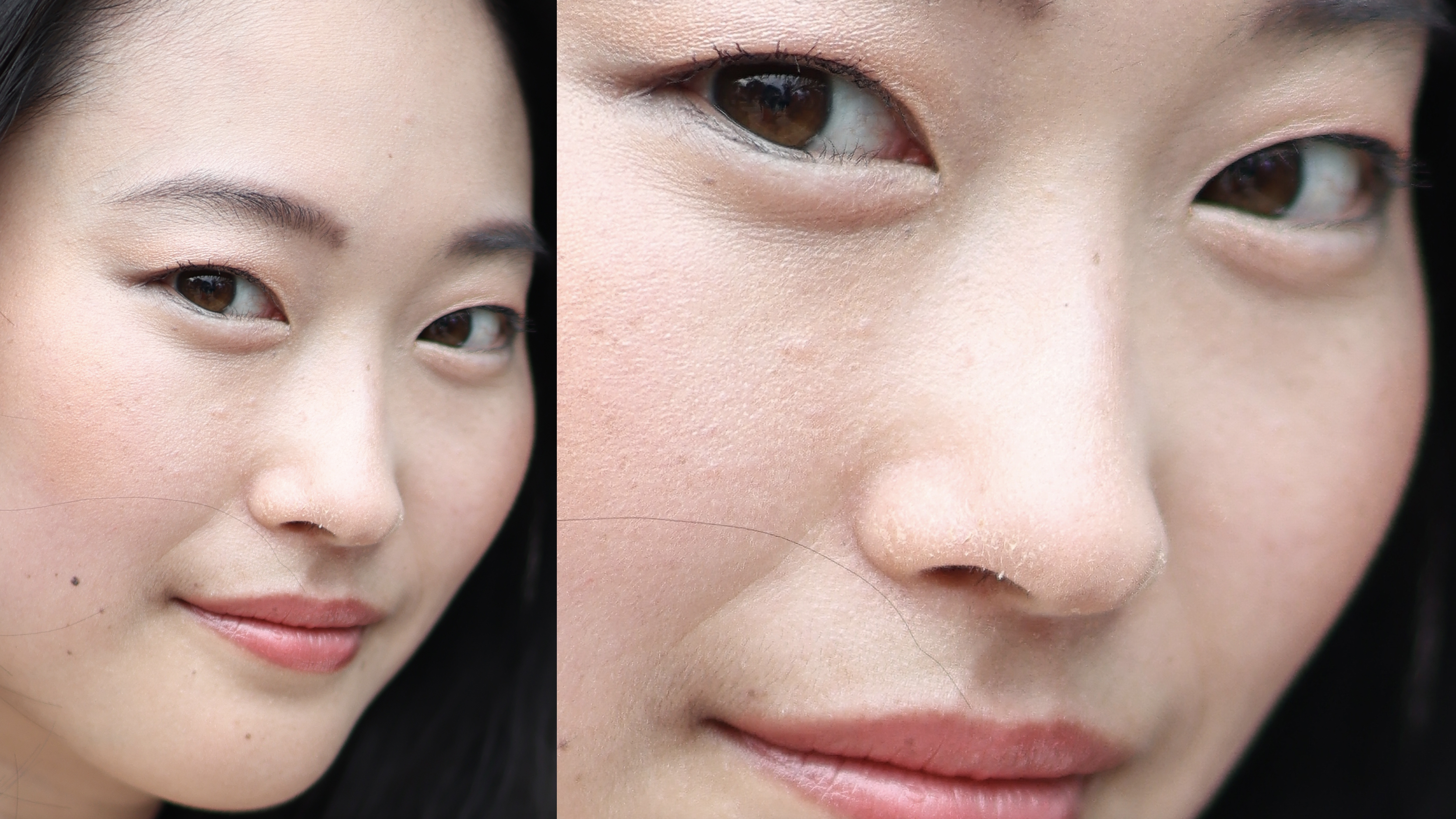
Canon has just made the megapixel race redundant. The days of sensors chasing ever-higher pixel counts are done. And cameras are never going to be the same again.
What am I talking about? Let me explain.
The Canon EOS R1 and Canon EOS R5 Mark II are packed with incredible new tech – none more incredible than the incorporation of in-camera neural network processing, powered by AI and deep learning.
The two biggest party tricks are 400% In-Camera Upscaling and 2-stop Noise Reduction. The former takes 24.2MP images taken on the R1 and 45MP images taken on the R5 Mark II, and transforms them into 96MP and 180MP images respectively.
And it's absolutely brilliant.
Unlike post-production software such as Topaz, which has to use guesswork and AI to interpolate and completely invent the pixels and data when it upscales your images, Canon's technology doesn't have to guess anything: it knows everything about your image using the information recorded to the camera at the moment of capture.
It knows what lens you used, the aberrations created by its optical formula, the ISO sensitivity and the noise it introduces, the aperture and its effect on defocus, the white balance, the bit depth… in short, this isn't in the same ballpark as third-party upscaling software that just guesstimates these values. Canon's tech simply embellishes all the information it already has about your photo.
Take a look at a couple of examples for yourself, taken on each camera:




Upscaling an image is simple. Cruise through the menus on the R1 or R5 Mark II and choose In-Camera Upscaling, select your images, choose whether to save them as a new file or replace the existing one, and press OK.
Presto! Within a few seconds, the camera churns out your new, super-resolution files that obliterate the pixel count of any full-frame camera – and, with the R5 Mark II, any current medium format camera, too.
There are, however, a few faffs. Selecting images one at a time (even to batch load them) is a bit of a faff – and it's made worse by the fact that, once you've upscaled one, the menu often jumps right to the last image on your card. And trust me, when you've got over 4,000 images on your camera (because you've been shooting 30fps all day), it is a massive pain in the ass to find where you were.
There's also the fact that, right now, upscaling only works on JPEGs or HEIFs rather than RAW files – which seems confusing, as there is obviously a lot more raw (literally) information with which to build a bigger image, rather than working from the already-compressed information stored in a JPEG or HEIF. (I asked Canon and it didn't really have a good explanation why RAWs weren't used instead.)
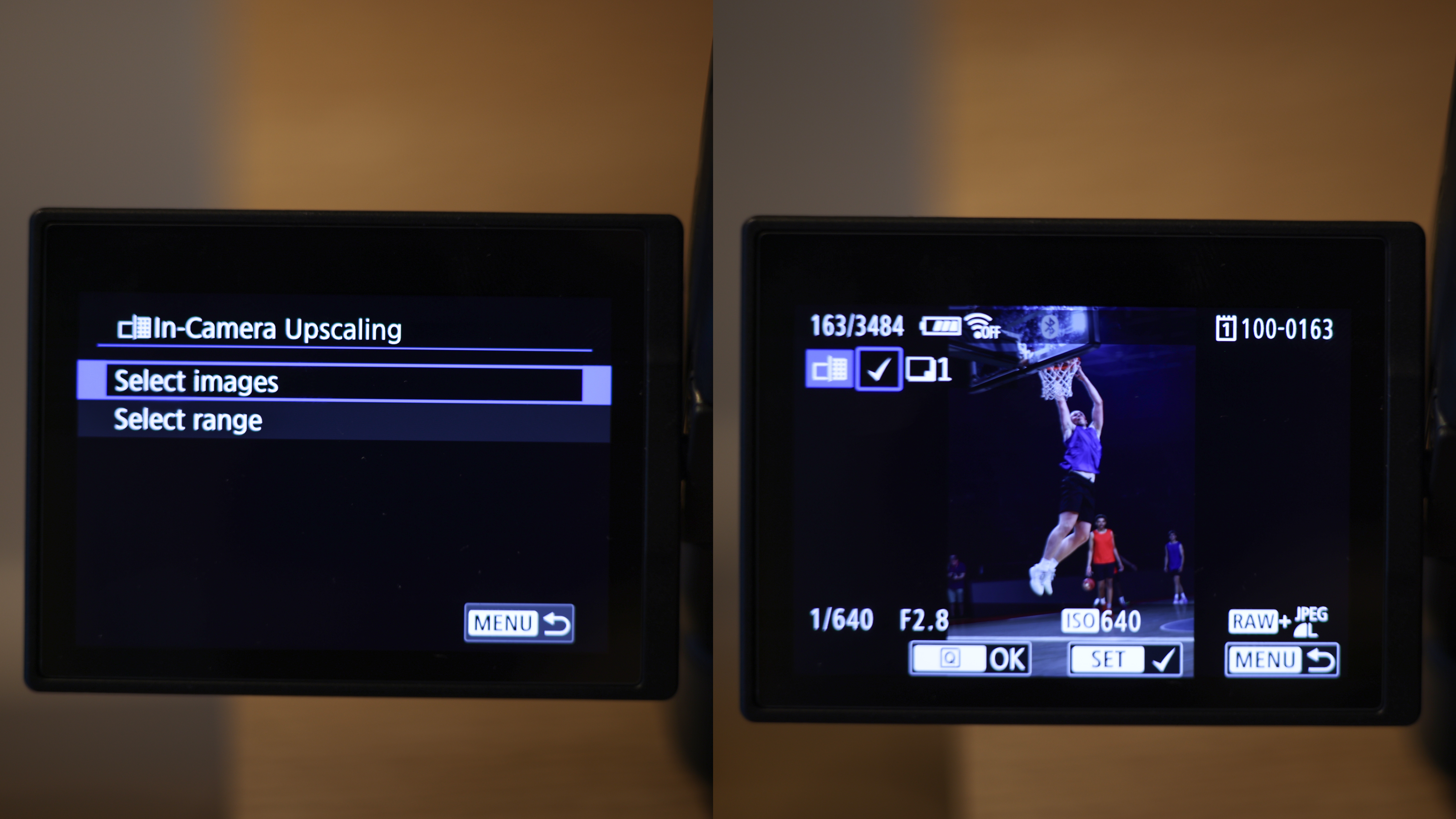
Oh, and cameras can only upscale their own files; the R1 can't upscale an R5 II file or vice versa (I also tried files from other cameras, including an original R5 and a Nikon Z7 II, but they don't work).
But there's two things. For starters, this is the first iteration of this technology and this user interface – it is only going to get even better and easier to use from here. More importantly, Canon is implementing these neural network features in Digital Photo Professional (DPP), Canon's RAW processing software.
Now, I get it – nobody uses DPP. And Canon gets it, too. Which is why it is launching an NnIP (Neural network Image Processing) plugin for Adobe products like Lightroom. In short, not only can you do this in-camera but you'll soon be able to do it on your desktop.
The same goes for the Noise Reduction feature as well. Take a closer look at some examples, both taken on the R5 II this time (simply because the photos are more interesting):
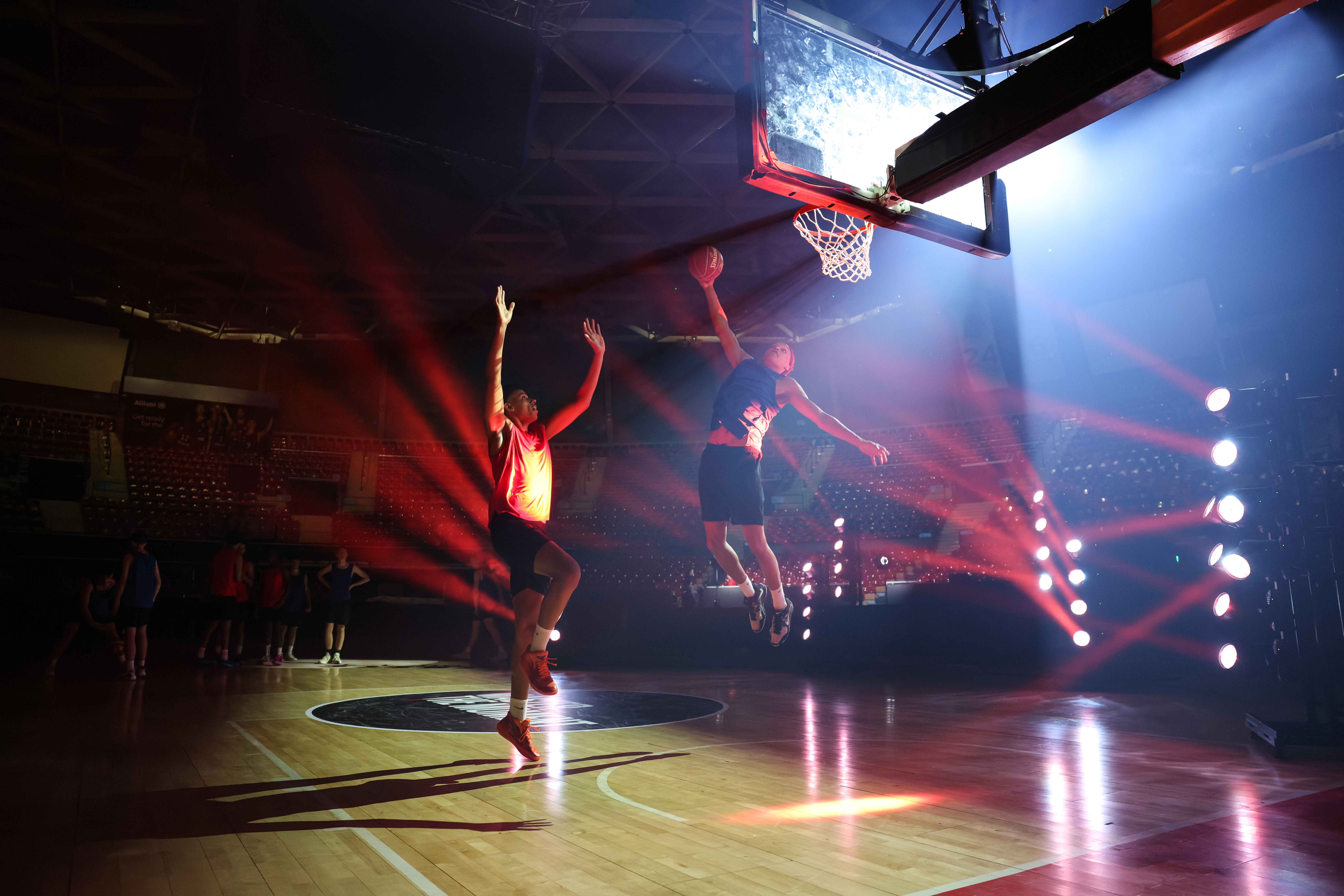
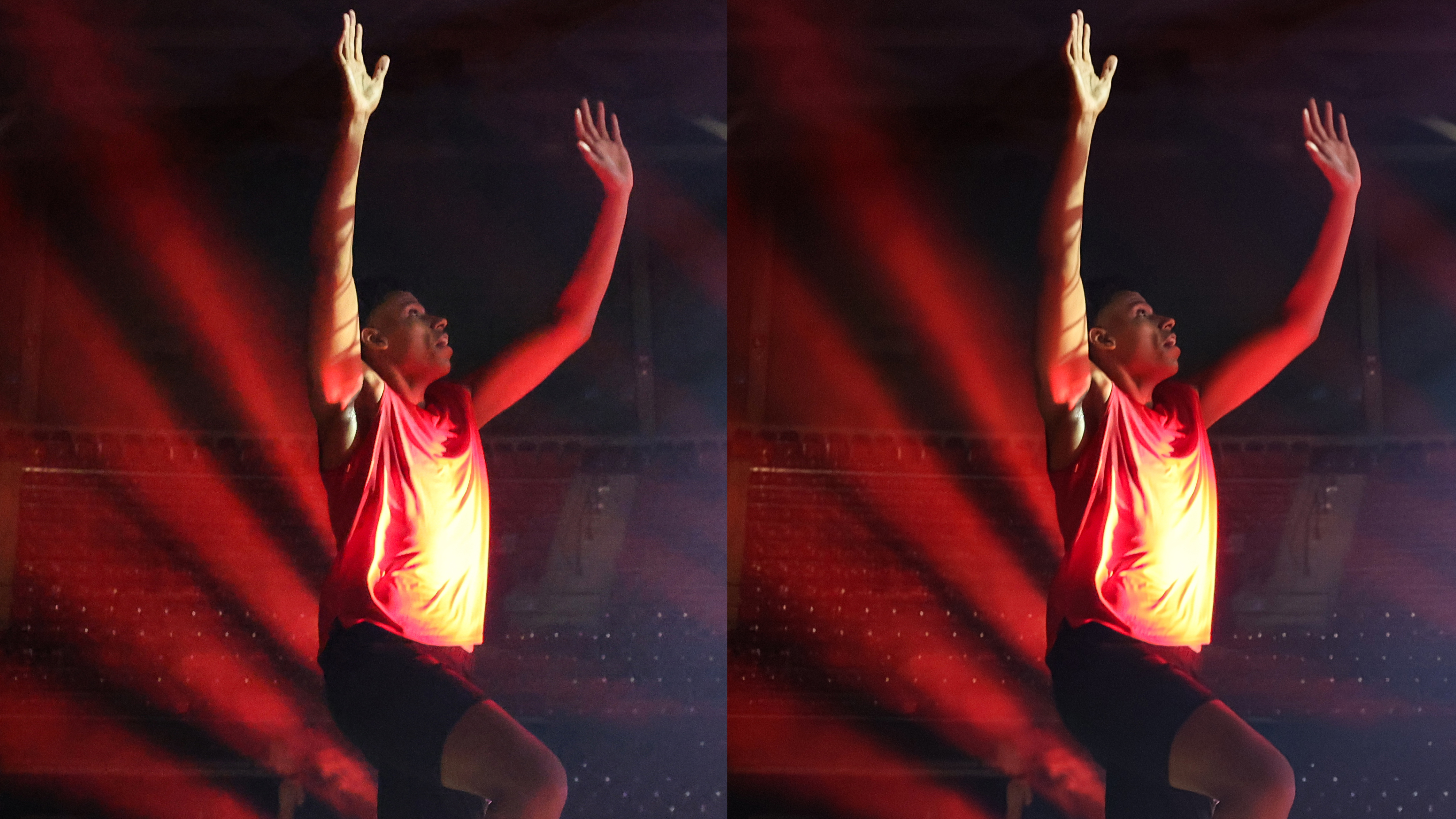
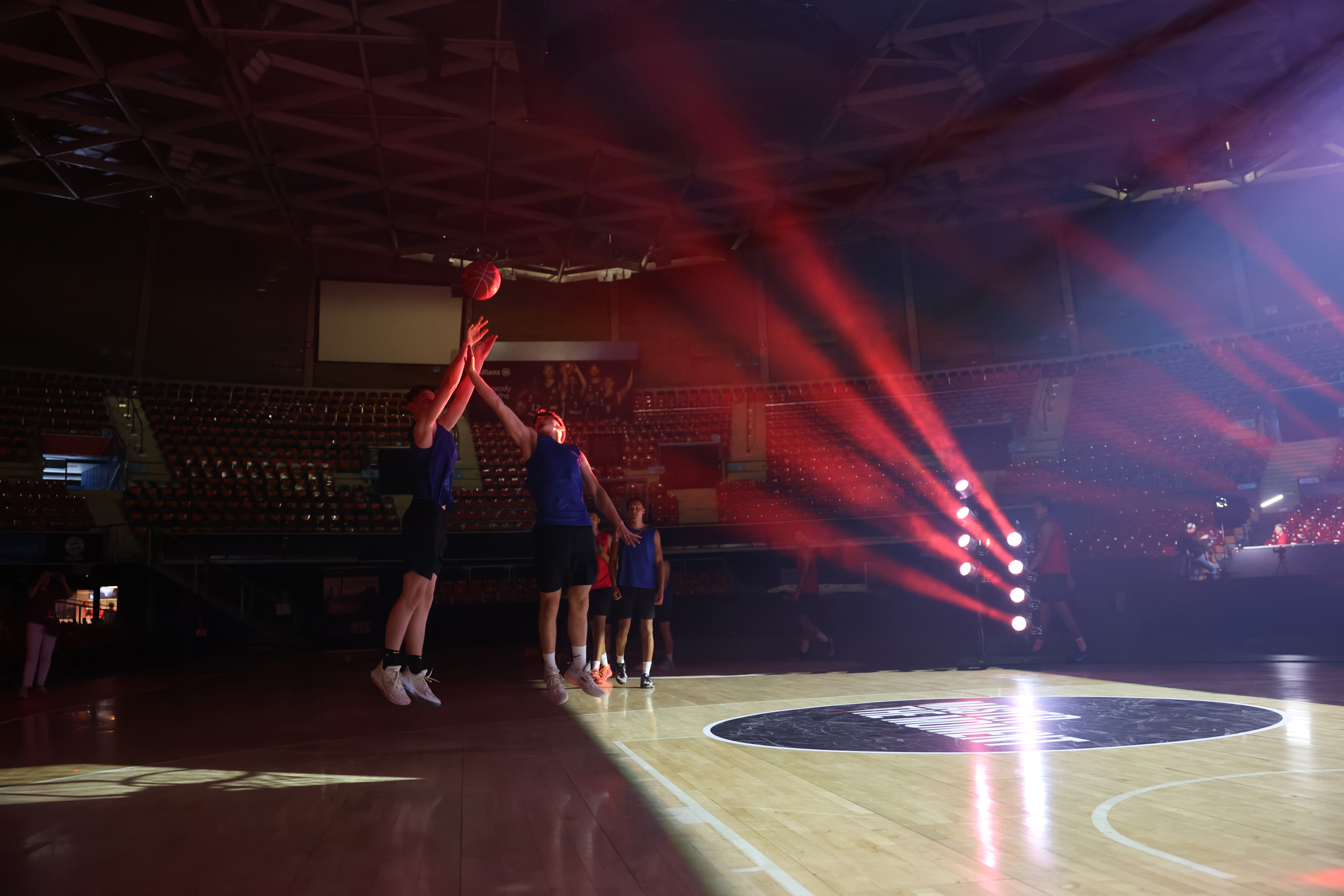
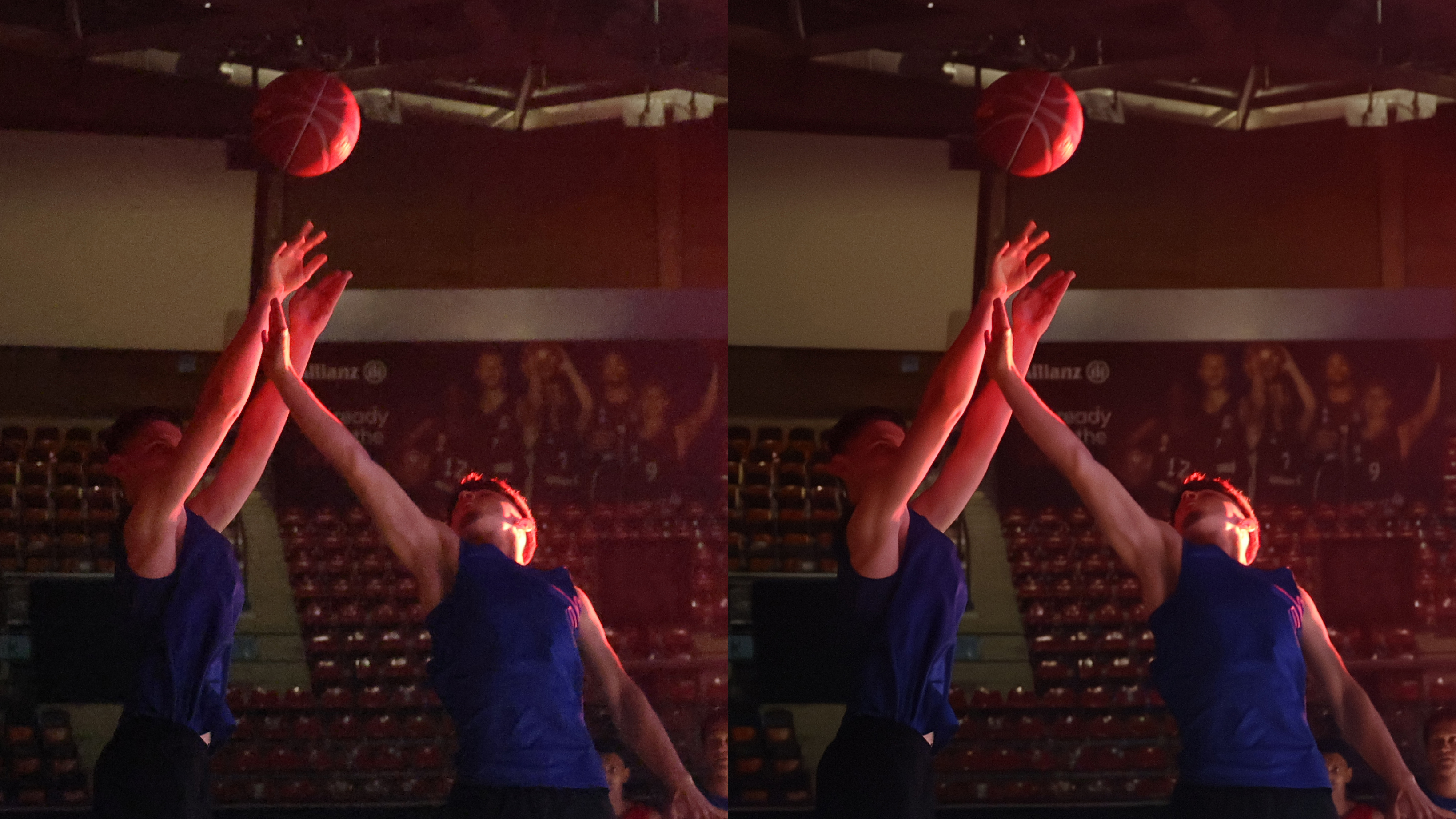
The Noise Reduction feature isn't as snazzy or immediately impressive as the Upscaling, and I can't actually show you the image I have that best illustrates its effect (grumble grumble, professional sports teams and usage rights).
But if you're someone who pushes your ISO sensitivity to get the shot, you don't need me to tell you what a genuine game changer this is. I pushed this as hard as I could, shooting some images at the R1's maximum native sensitivity of ISO102,400 to really torture the files.
Obviously denoising doesn't rescue the lost detail in your images. But it does clean up all the muddiness and ugliness created, particularly in the darker areas of your image – and I guess it does bring back some of the detail by proxy, as you can see in the text on the 100% crop above.
Where Upscaling is quite a streamlined process, Noise Reduction is more fiddly. First, you have to manually open and convert the RAW file to a JPEG or HEIF. Here you can carry out all the usual RAW fine-tuning such as color space, JPEG file size, Canon Dual Pixel RAW fiddling, and Neural network Noise Reduction.
There are three High ISO speed NR settings, Low, Standard and High. Canon told me to use the Standard setting, though I couldn't see a whole lot of difference when I tried the others. After you've enabled, selected and confirmed your settings, you then have to manually save your new JPEG or HEIF.

It's a whole bunch of button presses and, especially if you're processing more than one image, gets old very fast. But again – this is the clunkiest this interface is ever going to be, and I'm sure it's going to be a whole lot easier on a desktop.
Fiddliness aside, I believe these AI features are going to completely transform the way we look at cameras, sensors and performance. In one sense, the EOS R5 Mark II is essentially a 180MP camera with super-clean ISO performance. Why bother making expensive sensors with crazy resolution when you can just upscale at this quality?
But I look at this another way. Why even bother making a 24MP camera when you can make a 6MP sensor and upscale the files? That way you'll get the benefits of huge photosites for supreme low light performance, without any of the overheating woes that plague modern sensors.
And what does this mean for Canon's PowerShot products with 1-inch sensors – how much better could the image quality be coming out of pocket-sized cameras using this tech?
Whatever happens, Canon's in-camera AI is going to change everything.
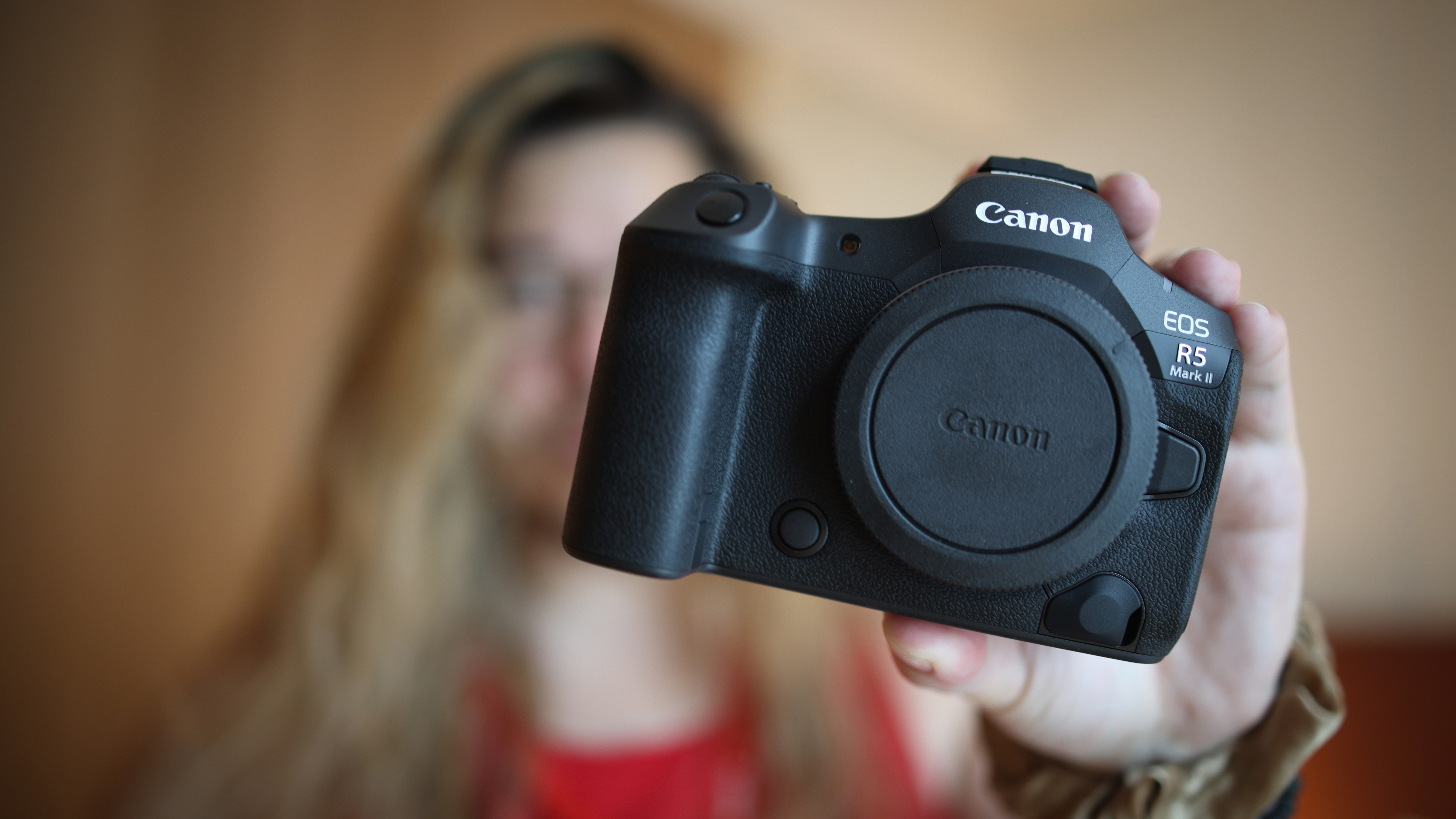
Note: These images were shot on pre-production Canon beta sample models, final image quality may vary.
You might be interested in my Canon EOS R1 review and my Canon EOS R5 Mark II review. TLDR: they're two of the best Canon cameras ever made.







